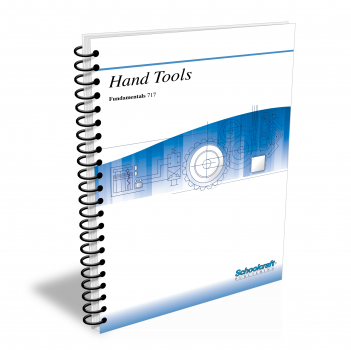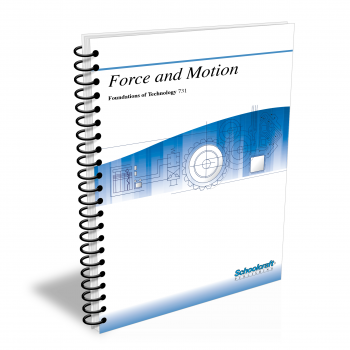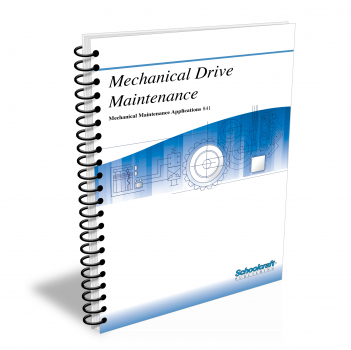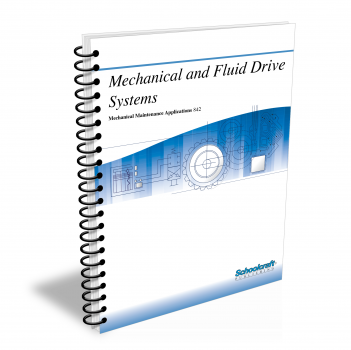Basic Mechanics
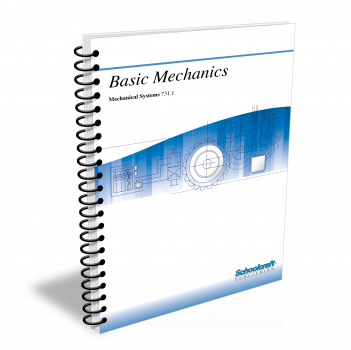
Course Number: 731.1
The Basic Mechanics textbook covers force and motion, work and energy, and fluid mechanics as applied in industrial maintenance. It explains principles of operation for simple machines, such as the lever, inclined plane, wheel and axle, pulley, and screw. It explains the basic elements of industrial machines, as well as common measurement tools used to monitor and adjust equipment. In addition, it covers hand tools, power tools and fasteners, ending with a discussion of ways to reduce friction and wear.
Does your curriculum require additional topics not included in this textbook? Build a customized version of the Basic Mechanics textbook below.
This textbook has been recently updated
to include topics lists, objectives, & key terms for every chapter.
Recommended Contact Hours – 15
Preview a Chapter
Available Supporting Material
- Table of Contents
- Exam Copies
- Suggested Titles
Table of Contents
Chapter 1: Forces and Motion
Topics: Measuring forces; Describing motion; Acceleration; Types of motion; Newton's Laws of Motion
Learning Objectives:
- Name five ways forces originate.
- Explain how forces are measured.
- Define velocity, acceleration, and elastic distortion.
- Define rotary motion and reciprocating motion.
- State and explain Newton's Laws of Motion
Chapter 2: Work, Energy, and Power
Topics: Defining and measuring work; Torque; Energy; Law of Conservation of Energy; Kinetic and potential energy; Power; Horsepower; Calories; Btu
Learning Objectives:
- Define work, and explain how to calculate it.
- Define the terms torque and prime mover.
- Define energy, and tell how it is measured.
- Differentiate between kinetic and potential energy, and give an example of each one.
- Define power and horsepower, and tell how each is measured.
Chapter 3: Fluid Mechanics
Topics: Fluids and forces; Measuring fluid pressure; Velocity head vs static pressure head; Bernoulli effect; Venturi tubes; Friction head; The siphon
Learning Objectives:
- Define a fluid.
- Define pressure, and identify common units of pressure measurement.
- State Pascal's Law, and give an example of its application.
- Explain the difference between gage pressure and absolute pressure.
- Explain the Bernoulli Effect, and give three examples of how it is utilized in industry.
- Explain how a siphon works.
Chapter 4: Simple Machines
Topics: Levers; Wheel and axle; Gear trains; Inclined planes; Wedges; Cam-and-follower devices; The screw; Pulleys; Mechanical efficiency
Learning Objectives:
- Identify and name six types of simple machines.
- Calculate the ideal mechanical advantage of each of six simple machines.
- Describe the action and purpose of cam-and-follower mechanisms.
- Determine the ideal mechanical advantage of several simple gear trains.
- Explain mechanical efficiency and show how to calculate it.
Chapter 5: Machine Elements
Topics: Machine motions; Mechanisms; Lever and four-bar linkages; Devices for producing linear motion; Ratchet-and-pawl and fluid-power mechanisms
Learning Objectives:
- List the four classifications of mechanisms.
- Name the six basic motion conversions, and give an example of each.
- Explain the functions of bell cranks, Pitman arms, and toggle bars.
- Name three types of four-bar linkages, and explain how they function.
- Describe the ratchet-and-pawl mechanism.
Chapter 6: Measurement Tools and Instruments
Topics: Classification of instruments; Measurements in maintenance; Process monitoring and quality assurance; Predictive maintenance
Learning Objectives:
- Define measurement, parameter, accuracy, precision, sensitivity, and range.
- Explain why measurements are important to maintenance operations.
- Describe the general features of a portable measurement instrument.
- List the basic measurement instruments most often used in mechanical maintenance, and describe the operating principles of each.
Chapter 7: The Safe Use of Hand Tools
Topics: Screwdrivers; Wrenches; Hammers and mallets; Chisels; Punches; Saws; Files and rasps; Snips, nippers, and cutters; Pliers; Organizing tools
Learning Objectives:
- Name the major hand tools used in maintenance.
- State criteria for selecting the proper tools for specific jobs.
- Identify safe/unsafe practices in the use of hand tools and explain why they are safe/unsafe.
- Explain how to prolong the useful life of selected hand tools.
- Explain the advantages of having a well-organized tool box.
Chapter 8: The Safe Use of Portable Power Tools
Topics: Hazards; Protection against shock; Drills, sanders, grinders, saws, shears, impact wrenches, and rotary hammers; Pneumatic tools
Learning Objectives:
- State three precautions to take before using any power tool.
- Describe the safe use of each of the following power tools: electric drills, sanders, grinders, and saws; electric impact tools; pneumatic impact wrenches and hammers.
- State three general guidelines for the safe operation of any portable power tool.
- Describe the potential electrical hazards associated with electric power tools.
Chapter 9: Fasteners
Topics: Threaded fasteners; Screw threads; Types of nuts; Washers; Safety wiring; Keys and pins; Rivets
Learning Objectives:
- Identify seven major types of threaded fasteners.
- Read and interpret common screw thread and threaded fastener specifications.
- Describe the three actions in a manual riveting operation, and explain why each action must be done properly.
- Demonstrate the proper technique for safety wiring a group of threaded fasteners.
- Identify three kinds of washers.
Chapter 10: Friction and Wear
Topics: Nature of friction, its causes and importance; Static and kinetic friction; Measuring friction; Coefficients of friction; Wear; Static electricity
Learning Objectives:
- Define friction, identify the forces that cause it, and describe its effects.
- Differentiate between static friction and kinetic friction.
- Define coefficient of friction.
- Calculate the expected friction force between two surfaces, given the normal force and the coefficient of friction.
- Describe four types of wear.
Request Exam Copies
Exam Copies
Ready to see a copy of our textbooks? After selecting which textbooks you’d like to review for your course, you can submit your request by either logging in or creating an account so we know where to ship your exam copies. A representative from Schoolcraft will contact you to confirm and finish processing your request.
Exam copies are always free and yours to keep.
Selected Exam Copies
none selected
* Maximum of five copies can be ordered

